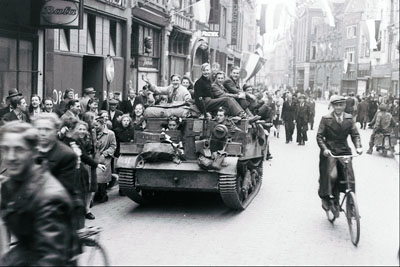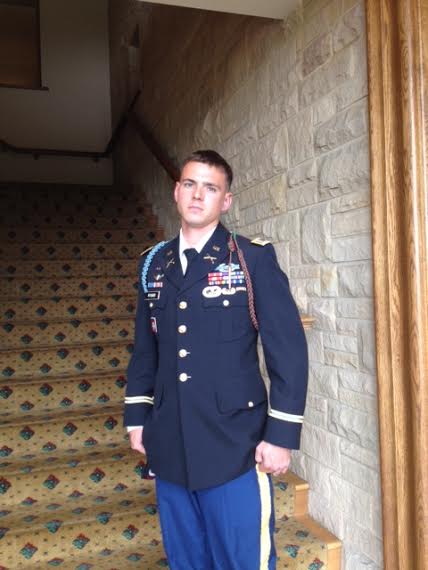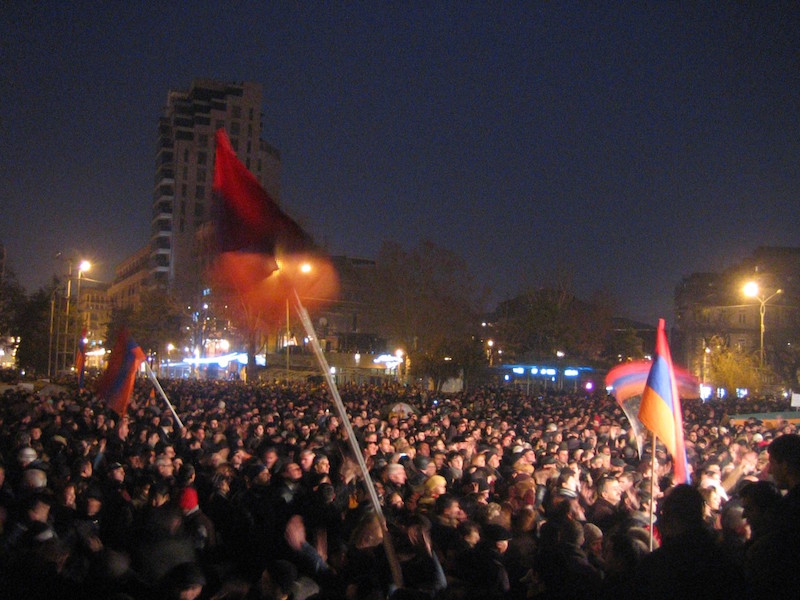Every year, members of the Canadian Forces (CF) travel to the Netherlands to take part in a renowned international event that is as intense emotionally as it is physically.
[captionpix align=”left” theme=”elegant” width=”300″ imgsrc=”http://www.forces.gc.ca/site/commun/ml-fe/images/articles/fullSize/10-24-01.jpg” captiontext=”Members of the Canadian Forces contingent participate in the Via Gladiola, the last five kilometres of the Nijmegen International Four Days Marches. Photo by Sgt Blair Mehan”]
The 97th annual Nijmegen Marches will begin on July 16, 2013. The inaugural event took place in 1909 and was developed as a way to promote physical education. The Nijmegen Marches require entrants to complete a four-day march through the city of Nijmegen and the surrounding areas. It was especially popular with the Dutch military who saw it as a rigorous training exercise and in the early years of the Nijmegen Marches, the majority of participants were military. The march has since evolved into an international event that attracts diverse groups of both civilians and military service men and women. The four-day walking event is the largest in the world and is witnessed by over 1 million spectators who line the 160 km route. Military participants march 40 km each day in combat uniform while carrying a 10 kg rucksack. Each year approximately 42,000 participants from over 50 countries take part in the march. Among those participants are members of the Canadian Forces.
Canada has participated in the marches since 1952. Like the other participants, the CF perceives the marches to be a challenging and prestigious event that is “the ultimate test of a CF member’s physical fitness and stamina.” But for the Canadians, the marches are also deeply symbolic. The Nijmegen Marches are the largest annual pilgrimage of Canadian soldiers, sailors, and air force personnel to a war cemetery outside of Canada. During the marches, the Canadian contingent stops at Groesbeek Cemetery which is the final resting place for more than 2,300 Canadians who fought and died during the Liberation of the Netherlands in World War II. The Canadian Forces describe the march and the visit to the cemetery as a deeply affective experience.” For most of the young Canadian marchers, it is the first time they have visited a Canadian War Cemetery, and they are often left surprised at just how emotional an experience it is. They also come away with a better understanding of their own history, and they see why the Dutch people hold the Canadian teams in such high regard.”
[captionpix align=”right” theme=”elegant” width=”300″ imgsrc=”http://www.cwgc.org/dbImage.ashx?id=6026″ captiontext=”The Groesbeek Cemetery is the final resting place for 2,300 Canadian soldiers who died during the Liberation of the Netherlands in World War II.”]
The trek to Groesbeek Cemetery serves as a reminder of the sacrifices made by Canadians during the war and highlights the special relationship that Canada has with Europe and the Netherlands in particular. Canada was vital to the liberation of the Netherlands from German occupation in World War II. The liberation campaign began in September 1944 as Allied armies reached the southern border of the occupied Netherlands. In October and November of that year, the 3rd Canadian Infantry Division cleared the south bank of the Scheldt and the 2nd Canadian Infantry Division fought along the north bank in a series of confrontations that became known as the Battle of the Scheldt. The Canadian First Army was successful in driving the Germans out of the area and Nijmegen became the Canadian base of operations during the final six months of the campaign to free the rest of the country. This Allied victory was strategically important and contributed to bringing the war to an end a few month later. Over 7,600 Canadians died in the liberation of the Netherlands – a sacrifice that is honoured every year during the Nijmegen Marches.
Although the Nijmegen Marches pay tribute to the past, they also underscore the importance of the Canadian-European relationship moving forward. When NATO was established shortly after World War II, Canada’s relationship with its European allies was institutionalized in the form of an alliance meant to safeguard the freedom and security of its members. In the beginning, the Alliance was pre-occupied with the rebuilding of Europe and the insecurity that characterized Cold War politics. In the post-Cold War era, the Alliance has maintained its relevance by focusing on new security challenges that have emerged in an increasingly globalized and technologically advanced international system. As Canada’s role in NATO continues to be shaped by shifting global dynamics, it is important to not only look toward the future but to also look back at the history that binds Canada and Europe.
As the Deputy Commander for the Canadian Nijmegen Contingent Major Eric Quirion explains, “participating in Nijmegen is an opportunity to be part of a meaningful activity that is important to Canadians. It continues to be a visible sign of our ongoing security commitments.” The end of World War II and the founding of NATO in 1949 is part of an increasingly distant past for many Canadians. Events like the Nijmegen Marches help remind Canadians in general, and members of the Canadian Forces in particular, of the commitment to shared history, values, and sacrifices that form the foundation of the NATO alliance.




